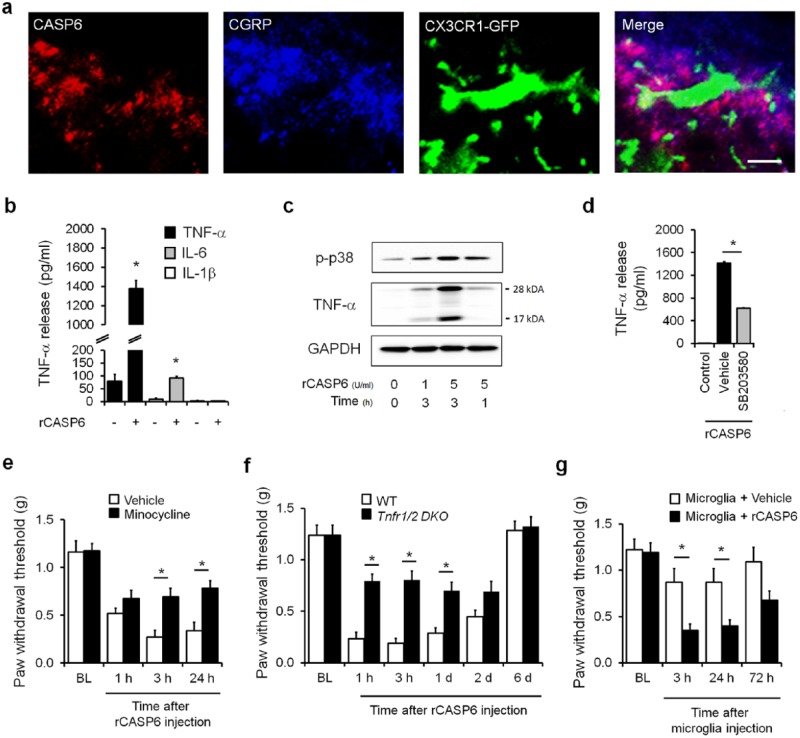Figure 1.
Caspase 6 (CASP6) induces mechanical allodynia via spinal microglial signaling in male mice. (a) Triple staining of CASP6, CGRP, and CX3CR1 (GFP) in the ipsilateral dorsal horn. Note close contacts between CASP6/CGRP-expressing axonal terminals and microglial cell body and processes. Scale bar, 10 µm. (b–d) Recombinant CASP6 (rCASP6) induces tumor necrosis factor α (TNF-α) release in primary microglial cultures via p38 activation. (b) Release of TNF-α and interleukins 1β and 6 (IL-1β and IL-6; ELISA analysis) in microglial culture medium after stimulation of rCASP6 (5 U/mL, 3 h). *P < 0.05, compared with control, n = 4 cultures. (c) Expression of p38 phosphorylation (p-p38) and TNF-α, revealed by Western blot analysis, in microglial cultures after rCASP6 treatment (5 U/mL, 3 h). Note a robust increase in the secreted form of TNF-α (17 kDa). (d) Effects of p38 inhibitor SB203580 (50 µM) on rCASP6-induced TNF-α release in microglial cultures. *P < 0.05, compared with vehicle (1% DMSO), n = 4 cultures. (e–g) Intrathecal injection of rCASP6- or CASP6-activated microglia induces mechanical allodynia via TNF-α secretion. BL, baseline. (e) rCASP6-induced mechanical allodynia (intrathecal [i.t.], 5 U) is reduced by minocycline pretreatment (i.t., 50 µg). *P < 0.05, n = 5 mice. (f) rCASP6-induced mechanical allodynia (i.t., 5 U) is abrogated in Tnfr double-knockout (Tnfr1/2 DKO) mice. *P < 0.05, n = 7 mice. WT, wild type. (g) Spinal (i.t.) injection of rCASP6-stimulated microglia, but not control microglia, induces mechanical allodynia. *P < 0.05, n = 5 to 7 mice. Modified from Berta et al. (2014) with permission from the journal. GAPDH, glyceraldehyde 3-phosphate dehydrogenase.

